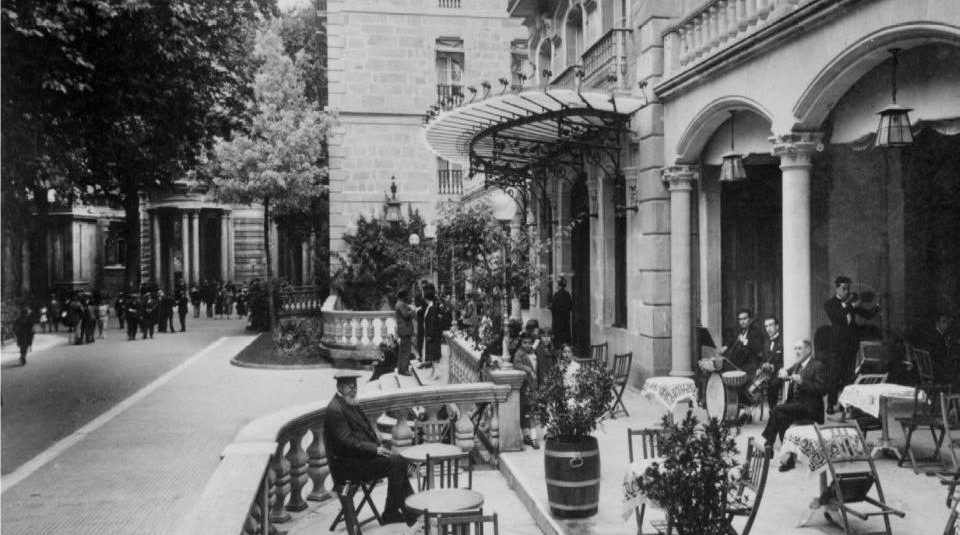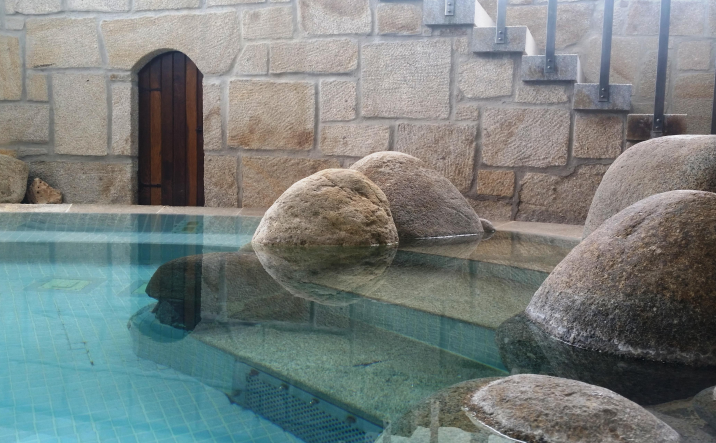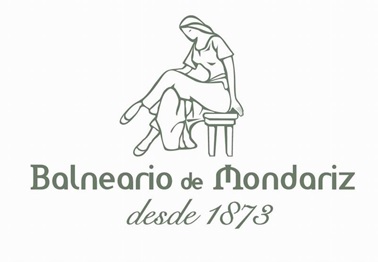Located in the lush valley of Tea river, amid the magnificent green landscape of inland Galicia, in the northwest of Spain, lies Mondariz-Balneario. Balneario is a Spanish word that can be translated to “medical spa”; indeed the life in this tiny quite towns flows around its mineral springs and magnificent thermal baths, dating back to the 19th century.
The thermal establishments are directly linked to the history of the town, which actually became an autonomous municipality because of the spa’s importance. Its history tell us about a dream which started here with the discovery of mineral waters with medicinal properties, and led to the creation of a thermal village, where the complex stands today.
Mondariz Spa
Historical Background
Archaelogical records have revealed that the area of Mondariz was inhabited even before the Romans. It is likely that the mineral springs were known by the time, and continued to be use during the Roman and Medieval period, with spa buildings being destroyed by the 12th century.
The proper history of Mondariz as a spa town starts in the late 19th century with the discovey of Mondariz’s mineral springs: the Troncoso fountain, discovered in 1862 by the local priest Domingo Blanco Lage and the Gandara fountain, discovered in 1872 by the physician Sabino Enrique Peinador Vela.The waters were soon certified for public used and by 1877 a bottling plant was established by the Peinador brothers, exporting one million bottles. The very first visitors started coming to Mondariz to sample the “miraculous” waters whose fame was soon spreading.
The Peinador family would be crucial for the development of the villa troughout the years. Besides the bottling company, Sabino and his brother Ramón believed that the waters could also be used in hydrotherapy treatments and in 1808 they built the first baths in the area. The facilities included the latests tecniques and equipments, such as an inhalation room and a gym, something unusual at that time.
The baths allowed Mondariz to very quickly become a fashionable resort, specially with the opening of the Grand Hotel in 1898, managed by the 2nd Enrique Peinador, son of the founder. Gardens and parks, promenades and verandas, a bandstand and many other buildings were erected, some of the them designed by the most reputed architects of that time, like Antonio Palacios.
Mondariz then became a gathering place for the society of the day, and the official supplier of the Spanish royal family: a luxurious and fashionable Belle Époque spaconnected to ports and national railways thank to the electric tram line between the spa town and Vigo. The complex even had its own magazines, La Temporada and Mondariz, were the most prominent guest wrote about their stays at the spa town.

Visitors to the lavish Grand Hotel of Mondariz included American magnate Henry Rockefeller and European royalty, as well as artst and writers like Benito Peréz Galdós and Emilia Pardo Bazán.
The Nobel Prize winner José de Echegaray, another famous visitor said : “This is not a Spa: it is a Water Palace", a name which has remained to this day.
The waters
Springs & Spas
Mondariz waters flow through deep layers of granite, surfacing at 15-17ºC in numerous springs. The water itself benefits from protection of its large catchment area, including a ban on mining and other industrial activities. They are rich in sodium bicarbonates and also contains magnesium and iron, being indicatd to treat rheumatism along with a number of skin, respiratory and gastrointestinal conditions, as well as metabolic disorders.
Years ago Mondariz waters were used only in drinking cures, and although nowadays the medical and wellness spa only offers hydrotherapy treatments, the water can still be tasted at the two historic buvettes: the Gándara and the Troncoso fountains.
These days, bottles of Mondariz water, with their distinctive blue, white and gold labels, may be found throughout Spain, while the resort has gone through a resurgence after the opening of the new “Water Palace” in 2005, and is once again known as the flagship of Galician thermal resorts.
The Water Palace is a brand new ludic spa center covering area of 3,000 m2 with a great central thermal pools and other smaller ones at different levels, jacuzzis, jets and waterfalls, everything crowned by a large crystal dome.
These new facilities complement those available at the classic medical baths, known for its ts advanced techniques in mineral-medicinal water application. The spa includes a spa circuit inspired by the ancient Celtic saunas. The circuit consists of a range of differently heated rooms, and a series of bathing experiences, along with massages and beauty treatments.
The spa complex offer top-quality accommodation in its luxury 4-star hotel, equiped with a conference centre. Visitors can enjoy the green landscape and pure air at its 18-holes golf course.

Main Springs
Gándara, Troncoso, Fuente del Val and Agua de Mondariz (bottled waters)
Earliest known use
pre-Roman
Hottest Spring
17ºC
Chemical Elements
Iron, sulphur, bicarbonates


